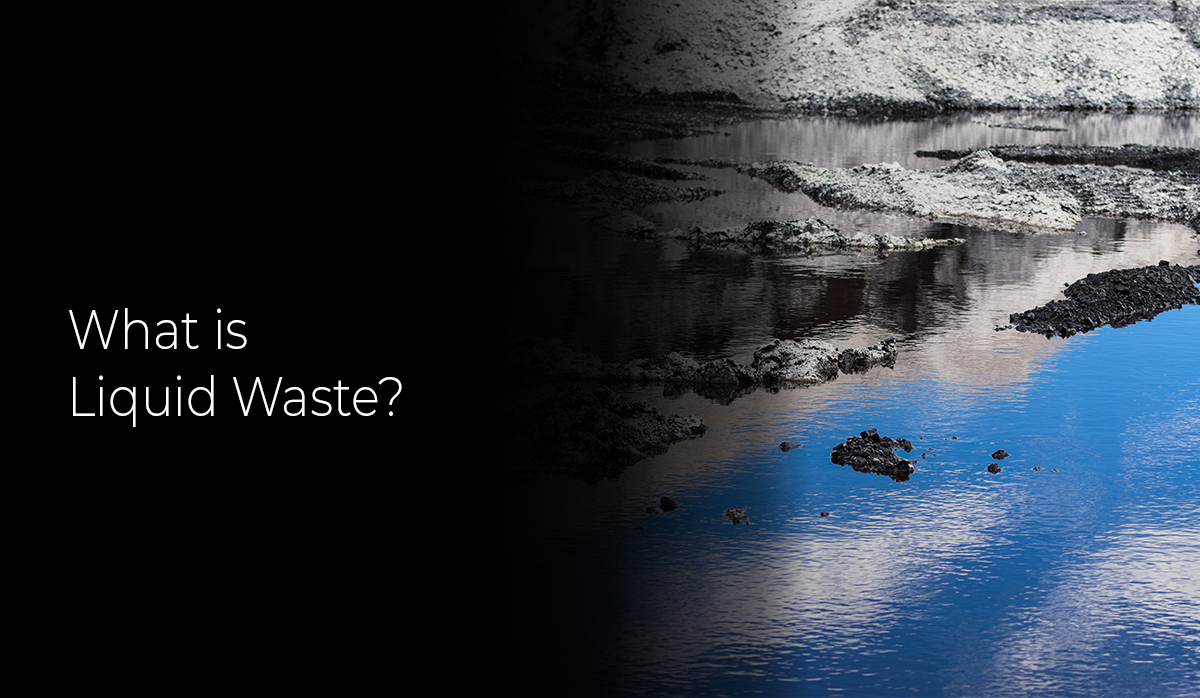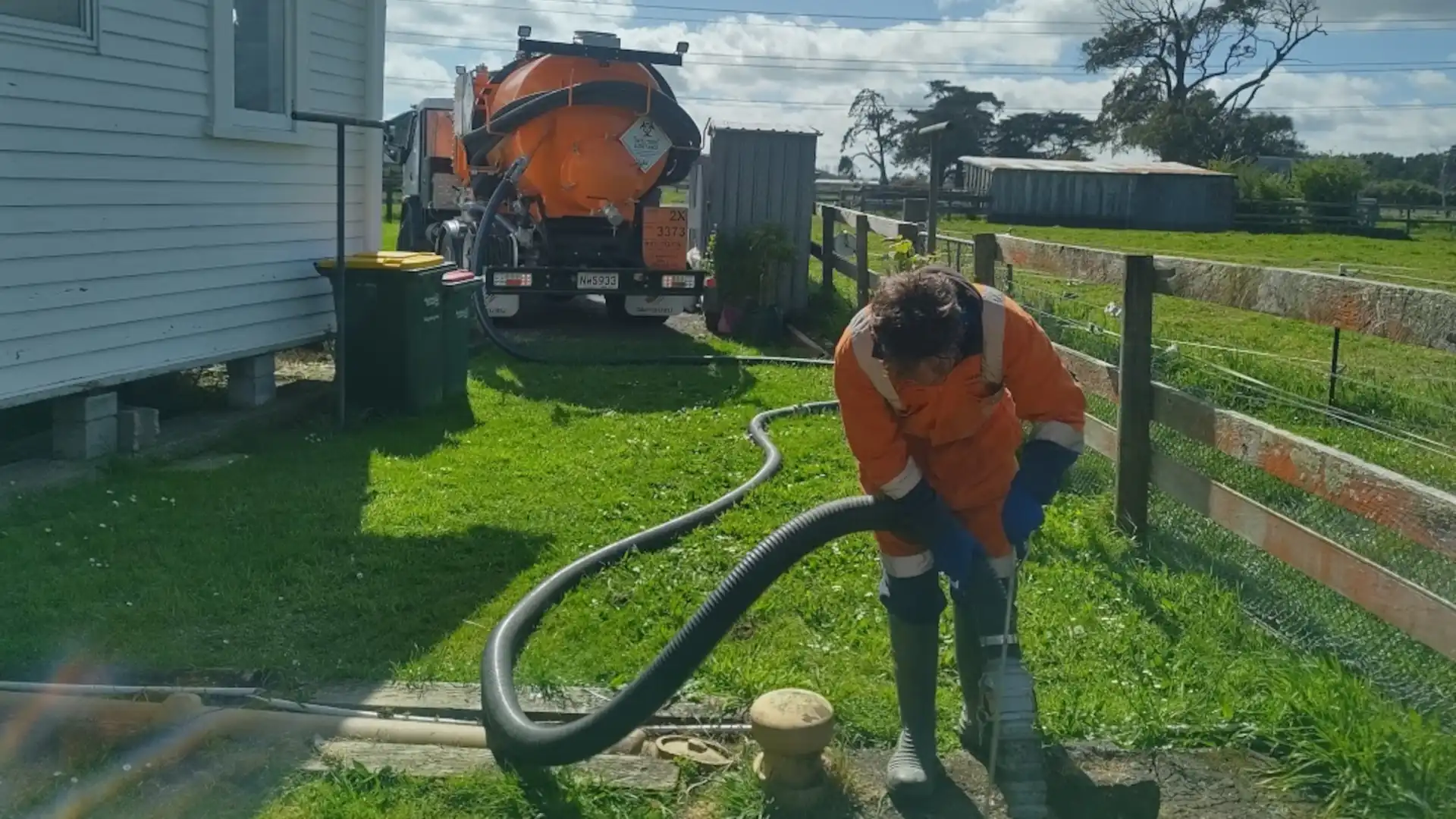Safe and Sustainable Liquid Waste Disposal: Your Go-To Service Provider
Safe and Sustainable Liquid Waste Disposal: Your Go-To Service Provider
Blog Article
Exactly How Liquid Garbage Disposal Functions: A Detailed Overview of Techniques and Technologies Employed

Introduction of Liquid Waste Kind
The intricacy of liquid waste types necessitates a thorough understanding of their qualities and implications for disposal. Fluid waste can generally be classified right into a number of kinds, including commercial, local, farming, and hazardous waste. Each group displays distinct properties, requiring details management methods to mitigate ecological and health dangers.
Industrial liquid waste originates from manufacturing procedures and frequently consists of a series of pollutants, such as hefty metals, solvents, and natural compounds. Community fluid waste, mainly comprising wastewater from homes and business facilities, contains natural matter, nutrients, and virus (industrial wastewater treatment). Agricultural liquid waste, including overflow from ranches, may consist of fertilizers, pesticides, and pet waste, positioning dangers to water high quality and environments
Unsafe liquid waste is characterized by its poisoning, sensitivity, or possible to trigger harm. Recognizing these diverse liquid waste types is vital for developing effective disposal approaches and guaranteeing conformity with ecological policies.
Physical Therapy Techniques

Testing is the preliminary action, where larger particles and debris are removed from the liquid waste using screens or grates. In sedimentation containers, much heavier particles settle at the bottom, creating a sludge layer, while the cleared up liquid can be additional dealt with.
Purification is another important technique that includes passing the liquid with permeable materials, such as sand or membranes, to catch smaller fragments. This action boosts the top quality of the liquid, making it appropriate for subsequent therapy processes.
Chemical Therapy Strategies
Chemical treatment techniques are vital for properly handling liquid waste, specifically in dealing with liquified and colloidal impurities that physical approaches may not sufficiently remove. These methods use numerous chemical representatives to neutralize, precipitate, or transform hazardous compounds into less unsafe types.
One common approach is coagulation and flocculation, where chemicals such as alum or ferric chloride are included to advertise the aggregation of suspended bits. This procedure enhances sedimentation, allowing for much easier elimination of the resulting sludge. Furthermore, oxidation procedures, utilizing representatives like chlorine or ozone, are utilized to damage down complex natural compounds and virus, providing the waste safer for discharge or additional treatment.
Neutralization is an additional crucial strategy, which changes the pH of acidic or alkaline waste streams to neutral degrees, avoiding possible injury to downstream systems and the environment. Additionally, advanced oxidation procedures (AOPs) make use of mixes of oxidants and ultraviolet light to weaken try this out consistent contaminants, achieving a greater degree of treatment performance.
Organic Therapy Processes
Organic therapy procedures play an essential duty in the administration of liquid waste by utilizing bacteria to break down raw material and lower impurity degrees. These processes can be broadly categorized into anaerobic and aerobic therapies, each using details microbial areas to achieve reliable waste destruction.
Cardio treatment entails making use of oxygen to promote the break down of organic materials by germs. This process is frequently executed in triggered sludge systems, where aeration tanks offer a conducive setting for microbial development, resulting in the oxidation of natural toxins. The resultant biomass can be divided from dealt with effluent through sedimentation.
In comparison, anaerobic treatment happens in the lack of oxygen, depending on various germs to damage down natural issue. This approach is particularly advantageous for high-strength waste, as it creates biogas, an eco-friendly energy resource, while lowering sludge manufacturing. Technologies such as anaerobic digesters are often utilized in municipal and industrial applications.
Both anaerobic and aerobic biological treatments not just minimize the environmental influence of liquid look what i found waste yet likewise facilitate source healing, making them vital components of sustainable waste management methods. Their effectiveness, flexibility, and effectiveness support their widespread application across various fields.
Emerging Technologies in Disposal
Ingenious techniques to fluid garbage disposal are rapidly advancing, driven by developments in technology and an enhancing emphasis on sustainability. Among these arising innovations, membrane layer bioreactors (MBRs) have acquired grip for their ability to incorporate biological therapy with membrane layer filtration, leading to top notch effluent that can be reused in numerous applications. MBRs enable smaller footprints and more efficient procedures contrasted to conventional systems.
One more encouraging growth is using anaerobic digestion incorporated with nutrient recuperation modern technologies, which not just treats liquid waste but additionally creates biogas and recovers important nutrients like nitrogen and phosphorus. This double advantage boosts resource efficiency and minimizes environmental impact.
In addition, progressed oxidation procedures (AOPs) are being adopted for the deterioration of complex natural toxins. These approaches make use of powerful oxidants and stimulants to break down pollutants at the molecular level, supplying an extremely effective solution for difficult waste streams.
In addition, the integration of artificial intelligence and equipment knowing in waste management systems is optimizing operational efficiency and predictive upkeep, leading to reduced expenses and boosted environmental compliance. These technologies reflect a significant change towards more sustainable and effective liquid garbage disposal techniques.
Final Thought
In final thought, efficient fluid waste disposal necessitates a detailed understanding of different methods and innovations. By constantly advancing these approaches, it becomes i thought about this possible to resolve the growing obstacles associated with liquid waste, ultimately contributing to ecological defense and resource healing.
Fluid waste disposal is an important aspect of ecological management, calling for a thorough understanding of various techniques and modern technologies customized to different waste kinds. Fluid waste can extensively be classified right into a number of kinds, including industrial, local, agricultural, and dangerous waste. Agricultural liquid waste, including overflow from ranches, might have plant foods, pesticides, and animal waste, posturing threats to water high quality and ecological communities.
Numerous physical therapy approaches play an important role in handling liquid waste efficiently - industrial wastewater treatment.In final thought, efficient liquid waste disposal demands a thorough understanding of various methods and modern technologies
Report this page